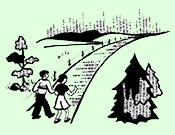
By Lois E. Wilson
Probably the first 2-dimensional representations of humans are found in cave drawings. There are 3-D examples of dolls used for play and rituals in early tribes and communities. Puppets and marionettes gave motion to human-like figures.
Traditional animation is the method wherein figures and images are drawn or painted by hand on transparent celluloid sheets, sequenced and photographed to appear as moving.
Animals for some time have been featured in product promotions. There has recently been a trend in advertising using more human animated figures. They are also seen in ads for nonprofit causes.
Rybelsus and Kroger’s currently have ads using animated people. Liberty Mutual includes an emu in many of its ads. It is a combination of the real animal and CGI (Computer Generated Imagery).
As animation has become more popular, some schools offer courses in it. Online is a source for finding them. Animation is versatile. In some products it can be used to show inside features that could not be seen otherwise. Studies have found people are more likely to watch ads which contain humor.
In many cases, animation is cost effective. There is usually not a need to do day-long filming and spend for a crew, set, travel, make-up, actors, and other necessary personnel. An exotic location depicting any site can be created by computer or graphics.
The new TV show “Alter Ego” uses the motion capture technique to create a new animated person. The singing voice and motions of an actual person off-stage are shown through the animation seen on the TV as if it was doing the performance.
Man has created robots to do some jobs in manufacturing formerly done by humans. Robots have gone to the moon, defused bombs, and accomplished other dangerous tasks. A recent “Daily Chronicle Extra,” told of a Texas restaurant owner who in one hour was able to program robots to serve and interact with customers. There are experiments in developing artificial intelligence in them. AI is programmed in and demonstrated by machines as opposed to the natural intelligence displayed by humans.
Should we worry that man may go too far with technology? Will we no longer greet strangers with a “Hello” or will we ask, “Are you for real?”

